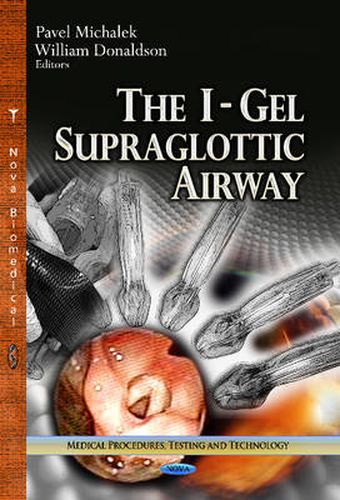Readings Newsletter
Become a Readings Member to make your shopping experience even easier.
Sign in or sign up for free!
You’re not far away from qualifying for FREE standard shipping within Australia
You’ve qualified for FREE standard shipping within Australia
The cart is loading…






The I-Gel supraglottic airway is a diposable, latex-free device for airway management during anaesthesia. The design of this device is significantly different from the previously used devices, notably laryngeal mask airways. Its bowl is made of a soft, non-inflatable thermoplastic elastomer, anatomically preformed to mirror the perilaryngeal structure. The I-Gel contains an additional epiglottis rest, which helps to prevent the epiglottis from down-folding or obstructing the laryngeal inlet. The device also includes a gastric channel, allowing drainage of air and gastric contents or passage of a gastric tube. This book provides a brief history of airway management and the classification of supraglottic airway devices; the mechanisms and forces contributing to their seal, and highlights the main differences between the devices. Also discussed is the process of I-Gel development including an initial mannequin and cadaver studies, with a description of the I-Gel’s use in clinical practice, indications and description of its use in the operating room, and use of the I-Gel in different surgical subspecialities including laparoscopic procedures.
$9.00 standard shipping within Australia
FREE standard shipping within Australia for orders over $100.00
Express & International shipping calculated at checkout
The I-Gel supraglottic airway is a diposable, latex-free device for airway management during anaesthesia. The design of this device is significantly different from the previously used devices, notably laryngeal mask airways. Its bowl is made of a soft, non-inflatable thermoplastic elastomer, anatomically preformed to mirror the perilaryngeal structure. The I-Gel contains an additional epiglottis rest, which helps to prevent the epiglottis from down-folding or obstructing the laryngeal inlet. The device also includes a gastric channel, allowing drainage of air and gastric contents or passage of a gastric tube. This book provides a brief history of airway management and the classification of supraglottic airway devices; the mechanisms and forces contributing to their seal, and highlights the main differences between the devices. Also discussed is the process of I-Gel development including an initial mannequin and cadaver studies, with a description of the I-Gel’s use in clinical practice, indications and description of its use in the operating room, and use of the I-Gel in different surgical subspecialities including laparoscopic procedures.